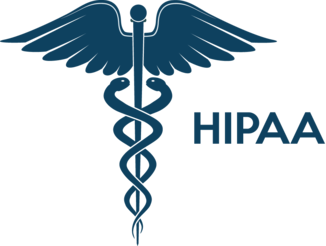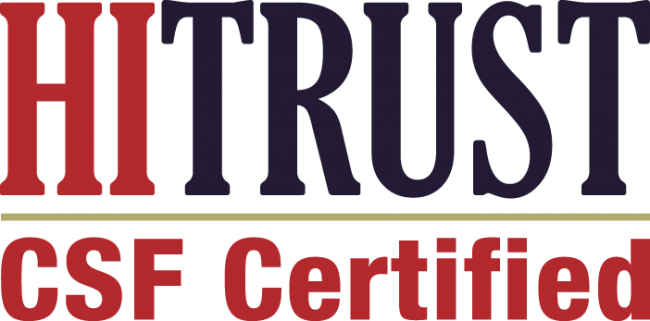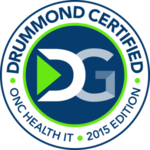As the world has more older people, the need for specialized geriatric care is growing quickly. Geriatric care looks at the special healthcare needs of older adults. It covers their physical, mental, and social health to help improve their quality of life. This field understands that aging has many challenges. It seeks to offer care that is personalized. The goal is to help older people stay independent, handle chronic conditions, and support their overall well-being as they age.
Understanding Geriatric Care in the Modern Age
Understanding geriatric care in today’s medicine is important. It helps us face the unique challenges and chances that come with an aging population. The usual medical model often looks at urgent care and treating diseases. We now need to change this to meet the various needs of older adults.
This change means we should focus more on a complete approach to healthcare. This includes ways to prevent health issues, manage ongoing diseases, and encourage older adults to stay independent. Also, geriatric care is not just about physical health. It also considers mental health, social support, and the role of caregivers in providing the best care for older adults.
The Evolution of Geriatric Medicine
Geriatric medicine is a branch of healthcare that has grown a lot to meet the needs of older adults. It understands that caring for seniors goes beyond standard medical care. This field focuses on managing several chronic conditions, dealing with age-related changes, and supporting independence in daily activities.
Healthcare providers who specialize in geriatrics know how to handle the special challenges of older patients. They are skilled in diagnosing and treating many age-related issues. They also create personalized care plans that consider a person’s overall health, abilities, and support from family or friends.
Thanks to advances in medical technology and a better understanding of aging, geriatric medicine keeps improving. This ongoing growth helps ensure that older adults get the specialized and patient-centered care they need to improve their quality of life and support healthy aging.
Key Challenges in Geriatric Care Today
The field of geriatric care has many challenges because the population is aging and chronic conditions are becoming more common. Healthcare professionals must handle various health problems in older patients. This often means using complex medication plans and working together with different specialists. To keep patients safe and get good results, effective communication and teamwork among healthcare providers are very important.
Also, it is critical to look at the social aspects that affect health when providing geriatric care. Issues like social isolation, lack of transportation, and money problems can greatly affect the health and well-being of older adults. Healthcare systems should recognize these social factors and find ways to reduce their effects.
Another obstacle is discussing end-of-life care with older patients and their families. Healthcare professionals must balance respecting the patient’s choices while offering caring and ethical support. This means having open talks and giving clear information about treatment options, palliative care, and advance care planning. This helps ensure that patients and their families feel supported during this tough time.
Comprehensive Geriatric Assessment (CGA)
A comprehensive geriatric assessment (CGA) is an important part of care for older adults. It checks a patient’s medical, mental, and working abilities. This assessment looks at different things, like how well someone thinks, moves, eats, and the support they have from others. Healthcare providers use CGA to create care plans just for older patients. This helps to improve their quality of life. CGA is key to finding problems related to aging and ensuring good health for elderly people.
Components of a Geriatric Assessment
A Comprehensive Geriatric Assessment (CGA) is a process that involves many evaluations. It helps to understand the health status of older patients. This assessment is usually done by a team of healthcare professionals. They look at different factors that affect the well-being of older adults.
The assessment starts by collecting important information about the patient. This includes their medical history, the medications they take, where they live, and who supports them socially. Physical health is checked with a detailed examination, tests in the lab, and screenings for common conditions faced by older people. The team also checks cognitive function, looking for memory issues, dementia, and other types of cognitive problems.
The CGA also looks at how well the patient can carry out daily activities. This includes tasks like bathing, dressing, and eating. Evaluating mood and mental health, as well as the risk of falls, adds to the overall picture of the patient’s health. This helps in creating a personalized care plan that meets the specific needs of each patient.
The Role of CGA in Personalized Care Plans
Comprehensive Geriatric Assessments (CGAs) are very important in making care plans for older people. They help understand a patient’s overall health, abilities, and mental well-being. This allows primary care doctors and geriatric medicine specialists to work together better.
By working together, healthcare providers can identify risks and customize plans to improve the patient’s health. For instance, if a CGA shows that a person has fallen before and has trouble moving, the care plan might suggest physical therapy, changes at home, and devices to help prevent falls and improve safety.
Also, CGAs help in finding and managing health problems that come with aging. This can slow down the illness and promote independence. This forward-thinking approach, based on the assessment’s findings, encourages older patients to be active in handling their health and to enjoy a better quality of life.
Innovative Models of Geriatric Care Delivery
As more people need help as they get older, new ways of providing care are developing. These methods aim to solve old problems in healthcare and improve the quality of life for older adults. They focus on delivering care that is easy to access, centered on the patient, and works well together to meet the many needs of aging people.
One example of this is integrated care systems. These systems connect different healthcare professionals and services all in one place. By encouraging teamwork and smooth transfers between care locations, these systems make sure that older adults get thorough and well-coordinated care.
Integrated Care Systems
Integrated care systems are changing the way we care for older adults. They connect healthcare professionals, services, and settings to provide complete support for seniors. Older patients often need help from many specialists. These systems aim to improve communication and ensure smooth transitions between different types of care. This teamwork helps prevent miscommunication, cuts down on fragmented care, and can lessen unnecessary hospital stays.
Integrated care systems bring together primary care doctors, specialists, pharmacists, therapists, and social workers. They focus on treating the whole person, not just individual problems. This means older adults receive comprehensive care that looks at their physical, mental, and social health. This leads to better health outcomes and enhances their quality of life.
Additionally, integrated care systems often include community-based services and support programs. They understand that care goes beyond hospitals and clinics. These services offer important resources and social connections for older adults. This support helps promote independence and reduces feelings of loneliness.
Telemedicine and Digital Health Solutions
Telemedicine and digital health solutions have emerged as transformative forces in modernizing geriatric care. These technologies address barriers to healthcare access, particularly for older adults facing mobility challenges or residing in underserved areas. Through video consultations, remote patient monitoring, and digital communication platforms, telemedicine extends the reach of healthcare professionals, improving the accessibility and convenience of healthcare services for older populations.
Digital health solutions, such as mobile health apps and wearable sensors, offer valuable tools for managing chronic conditions, tracking medication adherence, and promoting healthy behaviors. These technologies empower older adults to take an active role in their health management, leading to improved self-care practices and an enhanced quality of life.
| Telemedicine and Digital Health Solutions |
Benefits for Geriatric Care |
| Video Consultations |
Improved access to specialists, reduced travel burden, increased convenience. |
| Remote Patient Monitoring |
Real-time tracking of vital signs, early detection of health deteriorations, proactive interventions. |
| Digital Communication Platforms |
Enhanced communication with healthcare providers, streamlined medication refills, appointment scheduling. |
| Mobile Health Apps |
Medication reminders, health education resources, self-management tools for chronic conditions. |
| Wearable Sensors |
Activity tracking, fall detection, sleep monitoring, promoting physical activity and safety. |
Addressing Mental Health in Elderly Care
Maintaining good mental health is important for older people. It helps them remain healthy and enjoy their lives. Geriatric care understands that mental health needs must be met along with physical health. This is especially true for older adults facing changes due to aging, social shifts, and the risk of cognitive decline.
Identifying and treating mental health problems early is very important in geriatric care. Issues like depression, anxiety, and cognitive disorders need attention. By offering support such as therapy, managing medications, and running support groups, healthcare providers can greatly enhance older people’s emotional well-being and quality of life.
Identifying and Managing Cognitive Disorders
Cognitive disorders, like dementia and Alzheimer’s disease, create big challenges in caring for older adults. These worsening conditions affect memory, thinking, and behavior. This makes it hard for individuals to live independently and adds stress for caregivers. Finding cognitive decline early is very important. This helps put appropriate support and interventions in place.
Healthcare professionals use different ways to check cognitive function. These include memory tests, cognitive screenings, and neurological exams. If a cognitive disorder is found, a detailed care plan is created. This plan focuses on the individual’s needs and offers help for families and caregivers.
Treatment plans for cognitive disorders usually combine medication, cognitive therapy, and supportive care. By looking at mental and behavioral issues, healthcare providers can enhance the individual’s skills, improve their quality of life, and help caregivers.
Importance of Emotional Support and Social Interaction
Maintaining social interaction and emotional well-being is very important for the health and quality of life of older people. As individuals get older, they may go through big changes in their lives, like retirement, losing loved ones, or health problems. These changes can lead to feelings of isolation, loneliness, and a higher risk of depression.
Healthcare providers understand how social and emotional factors can affect older adults. They focus on encouraging social engagement and giving emotional support. Healthcare providers often check for signs of loneliness and depression in older people. They might suggest community programs that help connect people, like senior centers, support groups, or volunteer work.
These social activities help fight loneliness by allowing older people to build relationships, participate in meaningful activities, and feel a sense of purpose. By providing emotional support and encouraging social interaction, geriatric care highlights the importance of overall well-being as a key part of healthy aging.
Physical Health and Nutrition in Aging Populations
Maintaining physical health and good nutrition is very important as we get older. Our bodies go through changes that can affect how we move, our energy, and our overall health. Geriatric care understands this and focuses on making sure that care is personal and meets the specific needs of older adults.
Encouraging physical activity and exercise is key in geriatric care. It helps to make muscles stronger, improve balance, increase flexibility, and support heart health. These improvements greatly lower the risk of falls, which can cause injury and problems for many older adults. It also helps with better bone strength and lowers the chance of osteoporosis.
Exercise Programs Tailored for the Elderly
Maintaining good physical health is very important for older adults. It helps them maintain their independence and feel better overall. Geriatric care focuses on the idea that staying active and exercising are key to healthy aging. However, exercise programs need to fit the specific needs and limits of older people.
These exercise programs look at things like balance, flexibility, strength, and heart health. They often include low-impact activities that are easy on the joints but still provide a solid workout. Some examples are walking, swimming, water aerobics, tai chi, and yoga. Each of these can be adjusted to fit the fitness levels and abilities of different individuals.
Before starting any workout routine, older adults should talk to their healthcare provider. This step is crucial to finding safe activities based on their health history and any medical conditions they may have. A personal exercise plan can then be made. This plan helps older adults maintain or improve their physical health, lower their chances of falls and chronic diseases, and enhance their quality of life.
Nutritional Needs and Dietary Adjustments for Seniors
As people get older, their nutritional needs change. This can happen because their metabolism slows down, they may eat less, and their digestion alters with age. Geriatric care highlights how important it is to change diet advice for older adults. This helps them stay healthy and get the nutrients they need.
Older adults often need to eat fewer calories since they require less energy. Still, they should focus on foods that are rich in nutrients, like vitamins, minerals, and fiber. It’s good to eat more fruits, vegetables, whole grains, and lean proteins. At the same time, it’s important to limit processed foods, unhealthy fats, and added sugars to stay healthy.
Staying hydrated is especially important for older people, as they might not feel thirsty. They should drink enough fluids, mainly water, throughout the day. This helps keep their body temperature steady, supports digestion, and stops dehydration, which is a common issue for seniors.
Navigating End-of-Life Care
Navigating end-of-life care can be hard, both emotionally and ethically. It requires clear communication with the patient and their families. A caring approach is important to respect their values and choices. Geriatric care providers play a key role in helping patients and their loved ones make tough decisions during this challenging time.
Part of this support includes talking about advance care planning. This lets people share their wishes about medical treatments they would want or not want if they can’t make decisions for themselves. It is important to provide information about different end-of-life care options, like palliative care and hospice care. This helps ensure that decisions align with the patient’s goals and values.
Palliative Care Principles and Practices
Palliative care aims to improve the quality of life for people who have serious illnesses. This includes those who are close to the end of their lives. It uses a team approach to ease pain, manage symptoms, and reduce stress related to their condition. Palliative care can happen together with treatments that try to cure the illness.
A team of healthcare providers, nurses, social workers, and chaplains work together. They focus on the physical, emotional, spiritual, and social needs of both the patient and their family. This approach makes comfort and dignity a top priority. It also offers emotional and spiritual support to deal with the tough times of a serious illness.
Palliative care is very important in end-of-life support. It helps meet the physical and emotional needs of patients with kindness and skill. By managing pain, controlling symptoms, and caring for spiritual needs, palliative care helps people spend more meaningful time with their families and loved ones in their last days.
Legal and Ethical Considerations in End-of-Life Decisions
End-of-life care decisions can be tough. They involve many legal and ethical issues. It is important to respect what patients want. We must make sure they understand what they are agreeing to. Involving family members in these talks is very important.
Advanced care planning tools like living wills and healthcare proxies help to follow a person’s wishes about treatment and care at the end of life. Legal aspects include having the right documents, like a power of attorney for healthcare and do-not-resuscitate (DNR) orders. These guide decisions when a person cannot make them anymore.
Ethical issues focus on respecting the patient’s values and beliefs. We must keep their dignity and provide caring support. Healthcare providers play a major role in these discussions. They help patients and families understand the legal and ethical parts of end-of-life choices.
Good communication, care, and a promise to respect patient wishes are really important during this time. This ensures that end-of-life care matches what the individual values and wants.
Conclusion
In conclusion, geriatric care focuses on different aspects of health. This includes medical, emotional, and social areas that are important for older people. By using thorough assessments, new models of care, mental health support, and personal end-of-life care, we can improve the quality of life for our elderly family members. Helping them stay physically healthy with special exercise plans and better eating habits is key to helping them live longer and feel good. As we deal with the challenges of geriatric care, we must think about whole-person solutions that help meet the unique needs of our seniors with kindness and respect.
Frequently Asked Questions
What is the best way to find a geriatric care provider?
Finding the right care provider for older adults is very important. This helps make sure they get the special and caring medical attention they need. You can ask your primary care doctor for a referral to a geriatrics expert. You can also search online directories, like the American Geriatrics Society website, to find qualified healthcare services near you.
How does telemedicine impact geriatric care?
Telemedicine is a useful tool for caring for older people. It lets healthcare professionals offer virtual visits and monitor their patients from a distance. This technology helps older adults reach specialists easily. They can manage their health conditions comfortably at home without worrying about traveling.
Can diet and exercise make a difference in geriatric health?
Yes, for sure. Eating well and exercising regularly are very important for senior health. They help improve physical ability, control long-term health issues, lower the chance of falls, and boost the overall quality of life for older people.
What are the signs that an elderly person may need specialized geriatric care?
If you see an older adult having several health problems, struggling with daily tasks, falling often, or showing signs of memory issues, it may mean they need specialized geriatric care. It is a good idea to talk to a specialist in geriatric medicine or their primary care physician. They can help decide the best care plan for them.
Key Highlights
- Geriatric care is about the health needs of older adults. It looks at age-related issues and aims to improve overall well-being.
- With many people aging around the world, special care for the elderly is important for healthcare systems.
- This type of care takes a wide approach. It pays attention to physical health, mental well-being, social support, and care at the end of life.
- New ways to deliver care are growing, like integrated care systems and telemedicine. These help older adults get better access to quality of care.
- Focusing on prevention, finding health issues early, and creating personal care plans are very important in geriatric care.






